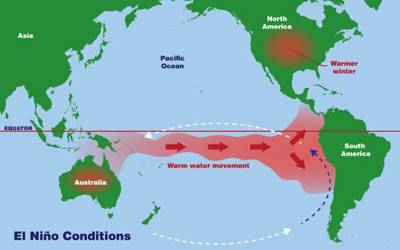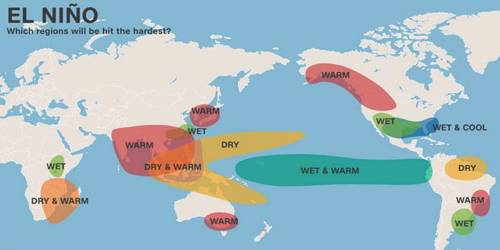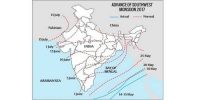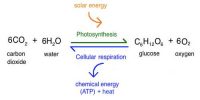El Nino: The name given to the occasional development of warm ocean surface waters along the coast of Ecuador and Peru. Recently this phenomenon has been used for forecasting of climatic conditions in different parts of the world. The El Nino normally occurs around Christmas and lasts usually for a few weeks to a few months.
The term El Nino refers to the major ocean-atmosphere weather interaction connected to a intervallic warming in ocean surface temperatures transversely the middle and east-central Equatorial Pacific. Typical El Nino effects are likely to expand over North America throughout the upcoming winter season. Those contain warmer-than-average warmth’s over western and middle Canada, and over the western and northern United States. The occurrence of El Nino can notably persuade climate patterns, sea circumstances, and oceanic fisheries across huge portions of the globe for an extended stage of time.

El Nino is accompanied by high air pressure in the western Pacific and low air pressure in the eastern Pacific. Naturally, this irregularity occurs at unbalanced periods of two to seven years and lasts nine months to two years. The common time duration is five years. When this warming happens for seven to nine months, it is classified as El Niño “conditions”; when its interval is longer, it is classified as an El Niño “episode”. It happens every few years. Its the majority straight impacts are famines in usually moist places in the western Pacific, such as parts of Indonesia and Australia, while usually drier places like the west coast of South America experience floods.















